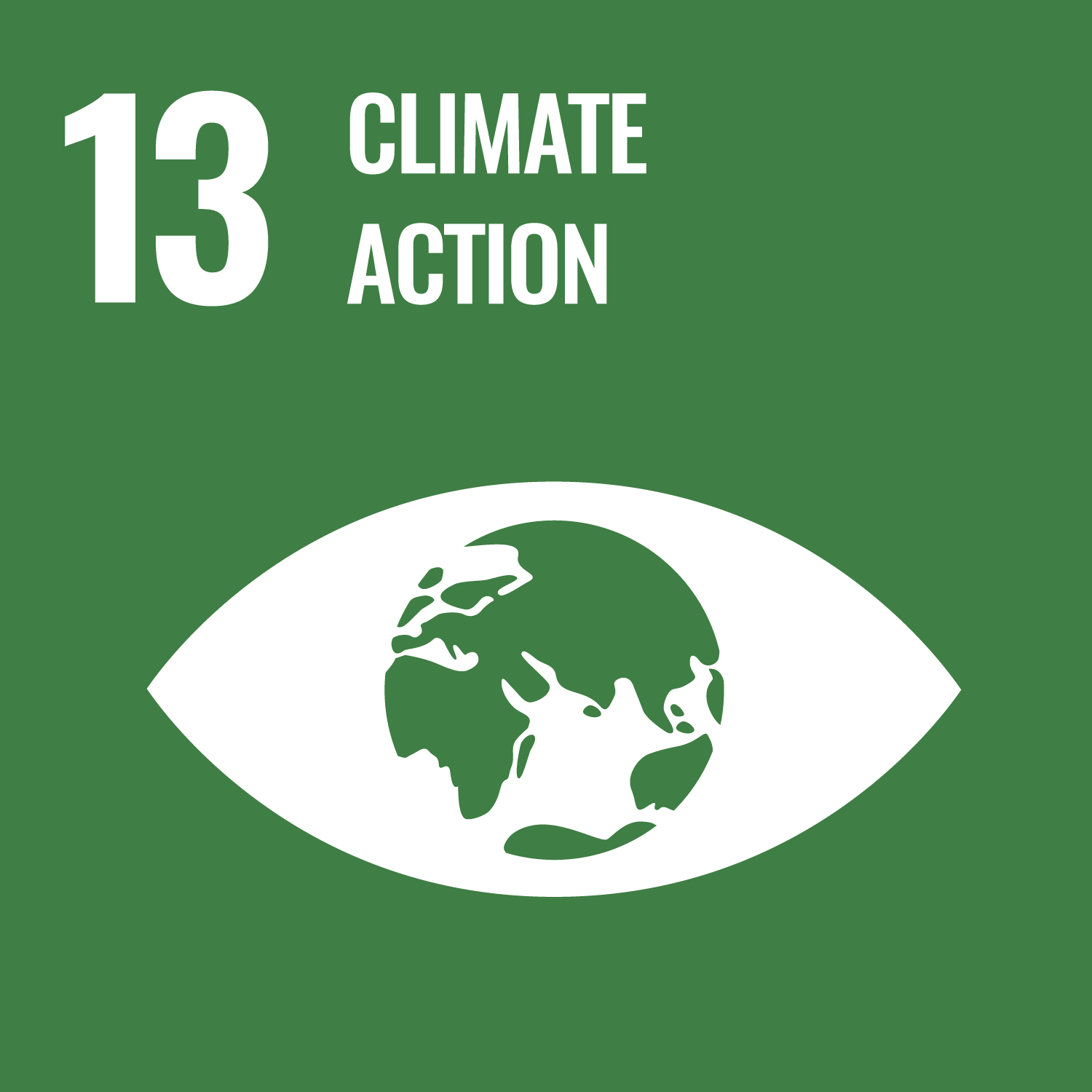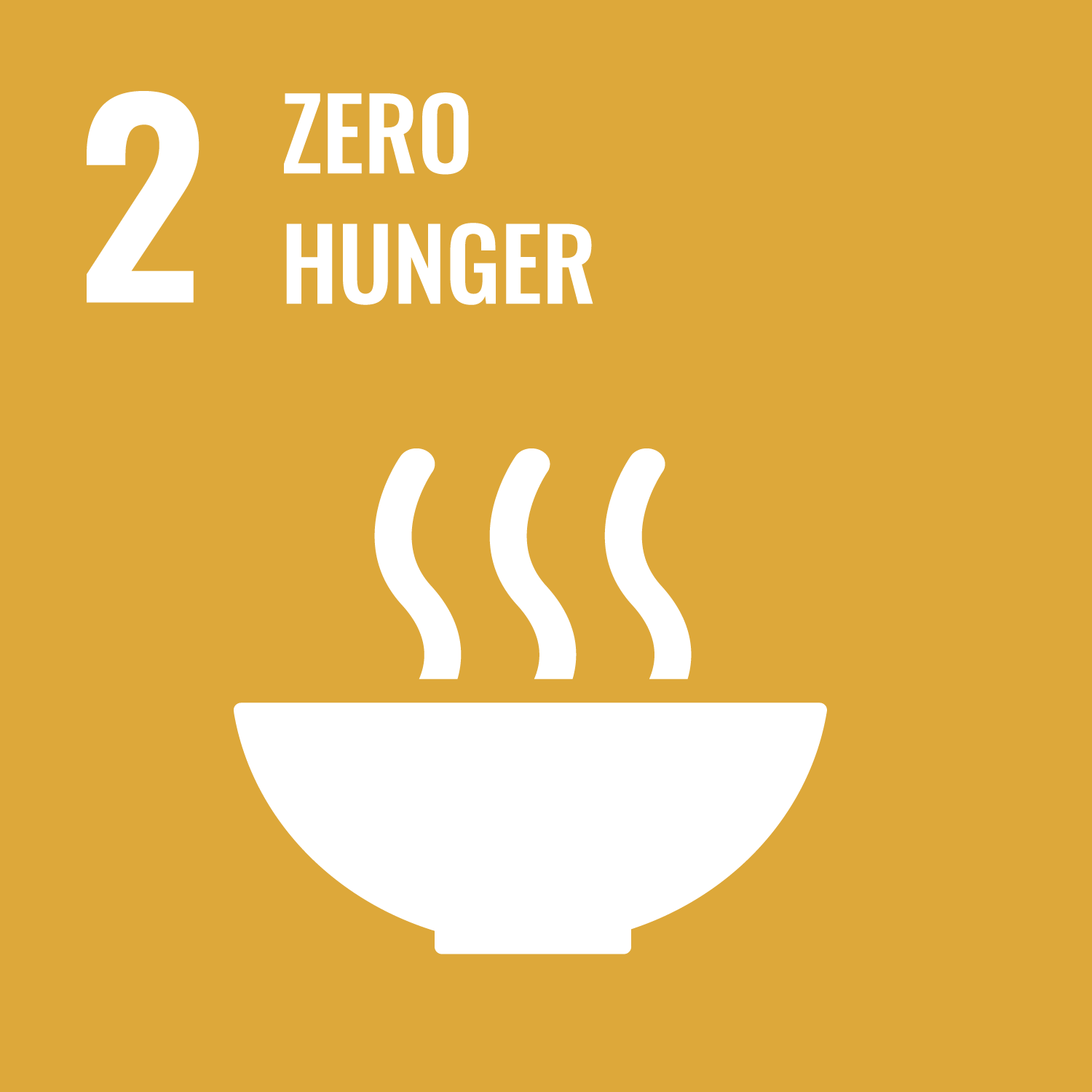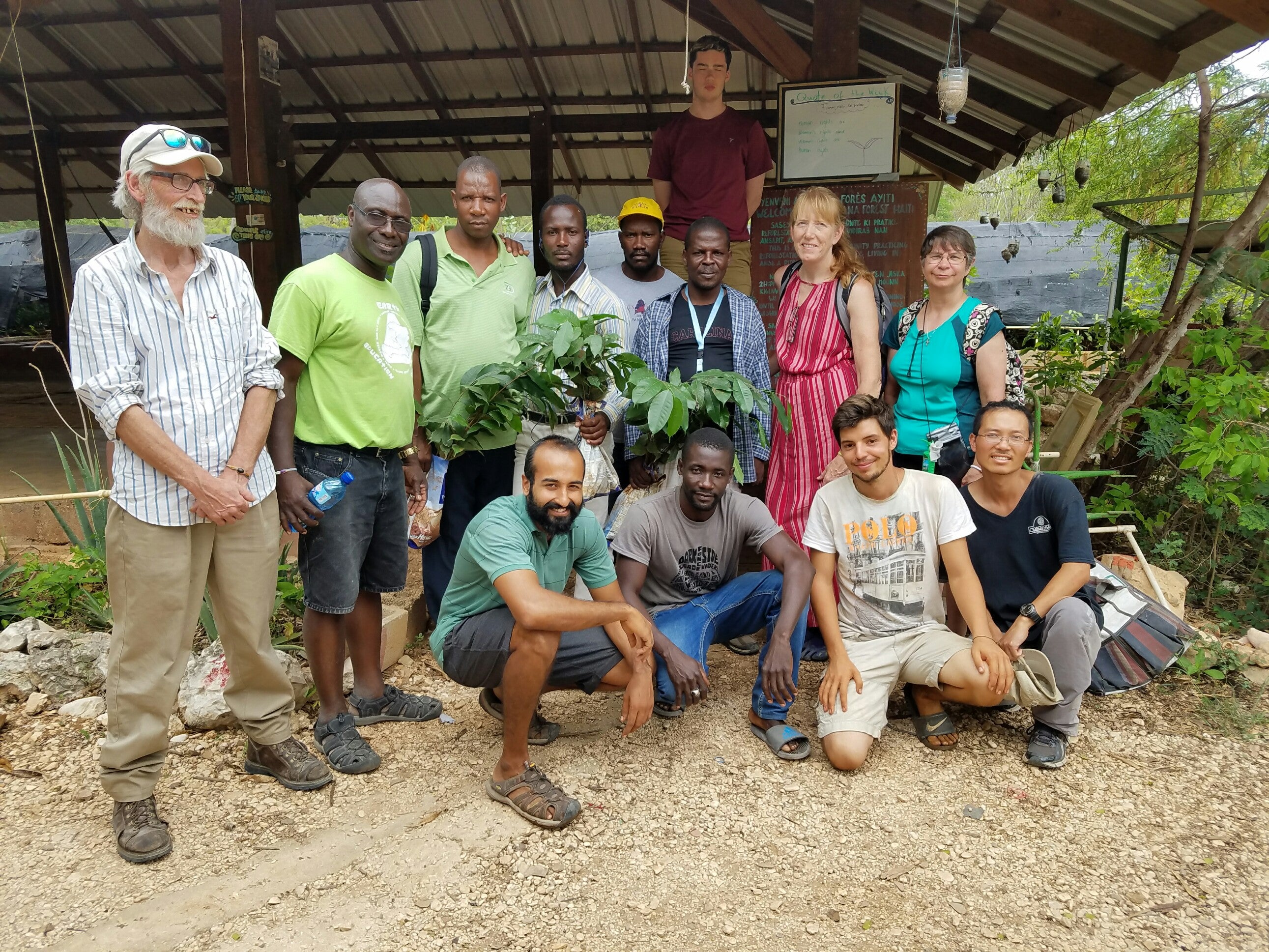
Food forests in Haiti
Sadhana Forest works with local communities and international volunteers to develop food-bearing forests and sustainably promote food self sufficiency in local coastal towns and villages.
Project Impact
An independent assessment of two-year survival rates showed an astonishing 74% survival rate of trees in the town of Anse-à-Pitres and 84% survival rate of trees in the villages around Anse-à-Pitres. So far, 130,000 trees of 20 different species have been planted. To put that into context, the potential of this survival rate is roughly 108,000 trees. Out of those trees, about 70,000 are Maya Nut (Brosimum alicastrum) trees. Many of them have already reached maturity, and if all of them reach maturity, they have the potential to produce 11,900,000 Kg of Maya nuts per year, which can easily feed 40,000 people.
Besides planting and nurturing trees, Sadhana Forest Haiti (SFH), like other Sadhana Forest projects, works on creating water conservation solutions. Because SFH is located on a rock bed, where little soil exists, it is relatively harder to conserve water. SFH constructs bunds from layers of rocks and uses discarded clothing to help slow down water run-off and aid percolation into the underground aquifer. The roots of the trees planted also contribute to water conservation by breaking down the rock bed and helping water percolate into the aquifer.
In addition, SFH holds Permaculture courses in Haitian Creole, workshops, and international Permaculture courses and is constantly expanding its operations in the Anse-à-Pitres area.
Project location
Sadhana Forest Haiti, Anse-à-Pitres, Haiti
Why plant in Haiti
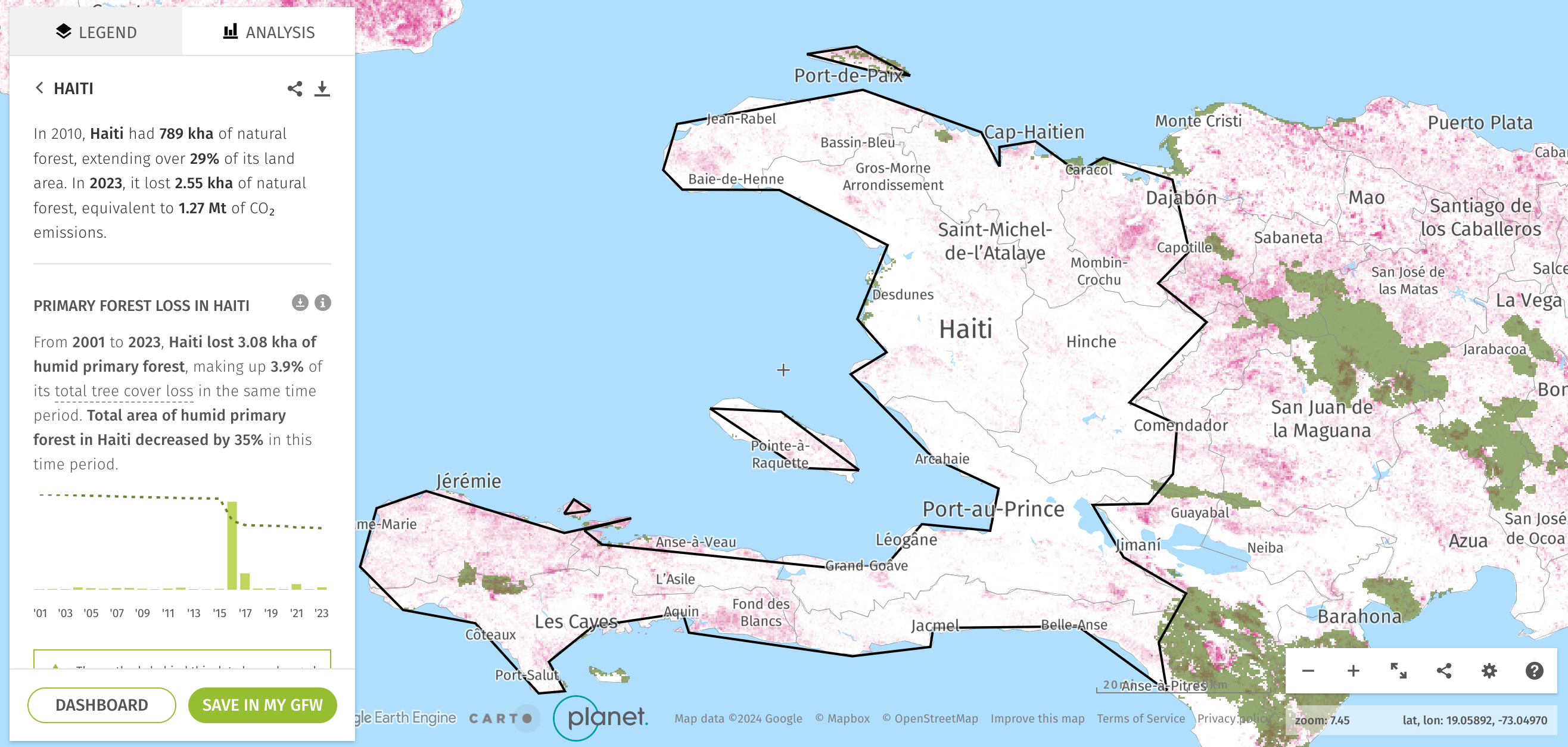
Project Details
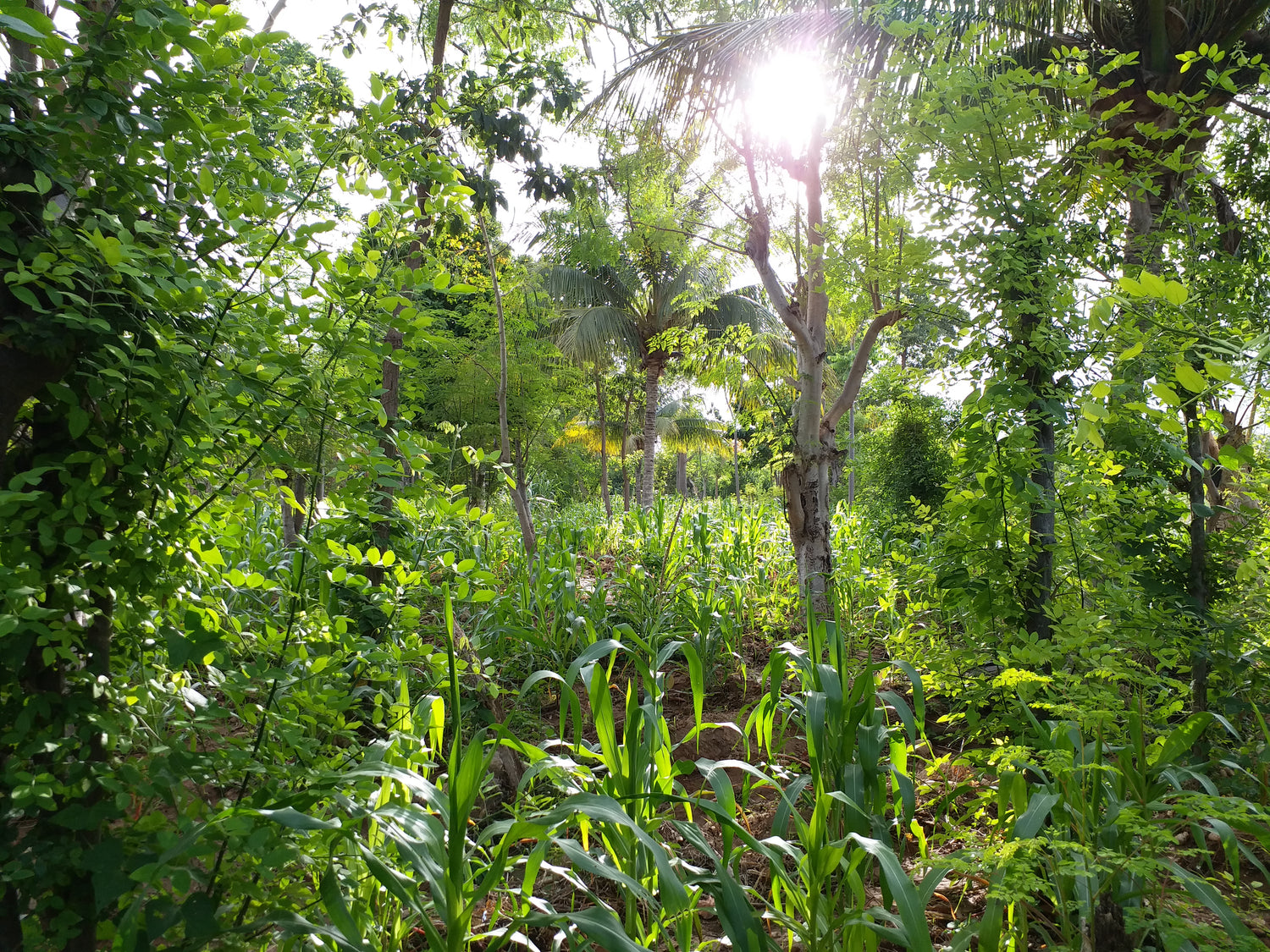
What are food forests?
The idea of forest gardens (food forests) was first articulated by Robert Hart in his book ‘Forest Gardening’ and subsequently became one of the keystone concepts in Permaculture. A Permaculture forest garden mimics the architecture and beneficial relationships of a natural forest. Food forests are not ‘natural’, but are designed and managed ecosystems that are very rich in biodiversity and productivity, and are based on a philosophy of co-operation with nature.
A food forest is typically composed of seven layers: the uppermost layer is the canopy layer that is composed of tall trees, mostly large fruit and nut trees. Between the tall canopy layer trees there is a layer of low growing fruit trees, and nestled between all these small trees are the shrubs which are well represented by currants and berries. Filling the remaining space is the herbaceous layer: these are the culinary and medicinal herbs, companion plants, bee-forage plants, and poultry forage plants. Any remaining space is occupied by ground cover plants, which form a living mulch that protects the soil, reduces water loss to evaporation, and prevents weeds from growing. While that might seem like a lot of plants in one space, there is still one more to fill: the upright vertical space. This is filled by climbers and vines, which can be run up fences, trees, or any other vertical support. This category includes grapes, climbing beans, many berries, passion fruit, kiwi fruit, climbing peas, and many other species that love to climb.
Food forests provide many benefits like high productivity per acre; natural mulch, compost, & fertilizer; natural pest control by using natural predators, and a resilience that can only come through biodiversity.
Learn more about Food forests and permaculture here
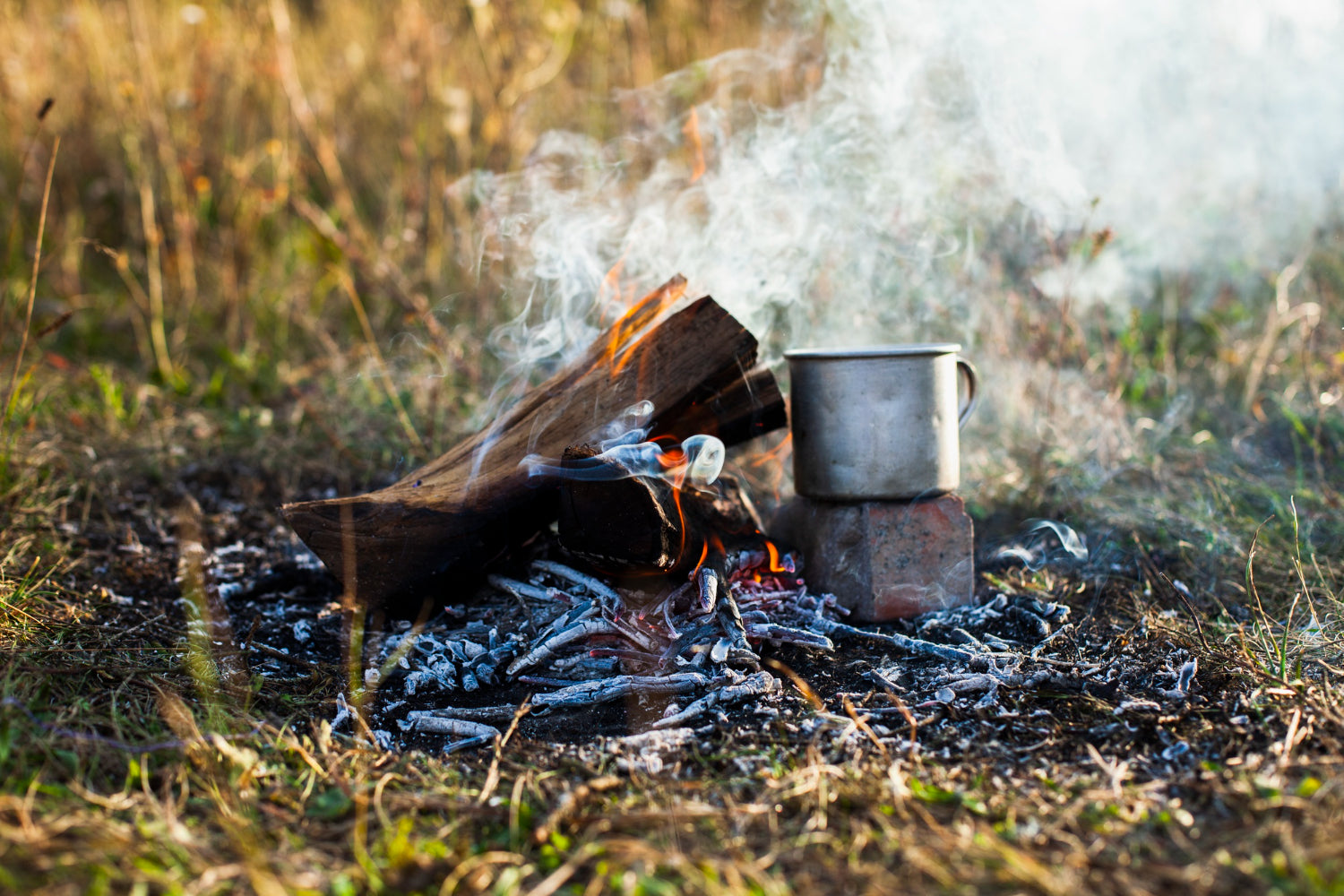
What is causing deforestation in Haiti?
One of the main reasons for deforestation in the Anse-à-Pitres (Haiti) area is the production of charcoal. Charcoal is the main resource for domestic energy needs such as cooking and is always in high demand.
Deforestation has increased soil erosion in Haiti, thereby polluting the country’s rivers and increasing its susceptibility to flooding; this pollution and flooding have then damaged Haiti’s most important sector: agriculture. Apart from these environmental concerns, cooking with charcoal is said to have led to serious indoor pollution, causing respiratory illnesses in a nation that is already plagued with many other health concerns.
While Haiti’s charcoal industry is unsustainable and detrimental to the general health of its population and environment, it still provides the country with important economic services. The charcoal industry employs an estimated 200,000 people, making it possibly the largest employer in Haiti. The charcoal industry also generates hundreds of millions of dollars for the economy, which is important considering that the country’s GDP is only $7.9 billion, and that 77% of its people live on less than $2 USD a day.
This has created the unique challenge in Haiti, where the livelihoods of hundreds of thousands of Haitians depend on the charcoal industry, which in turn is causing deforestation, increased health concerns and damaging Haiti’s agriculture sector, further impoverishing Haitians.
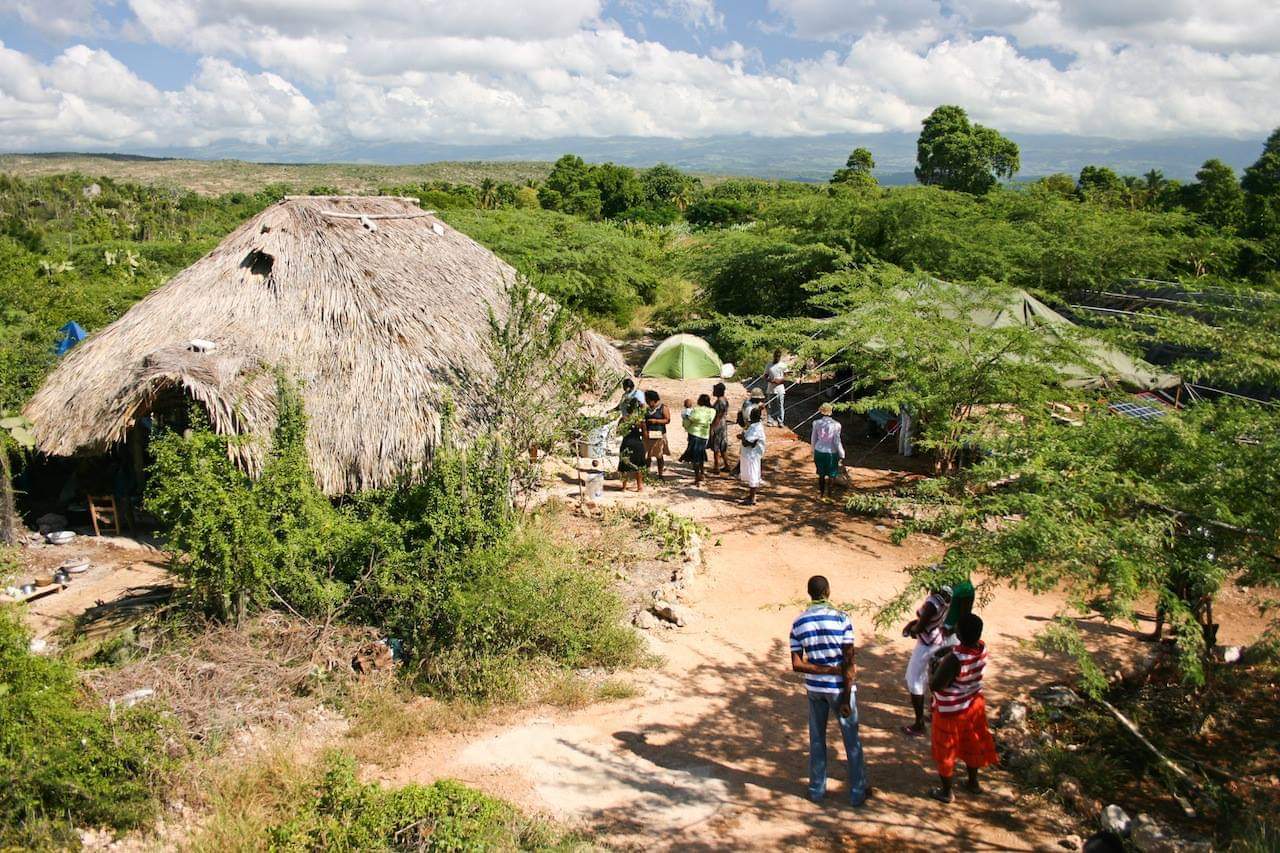
How is Sadhana forest overcoming these challenges with Food forests?
Due to the fact that the largely poor communities of Haiti depend heavily on deforestation for their livelihood, Sadhana Forest had to carefully consider how to approach this problem.
They started by choosing to grow highly productive food forests, that produced food and had medicinal properties. With agriculture struggling in the area due to pollution and flooding, this new source of food was welcomed by the community.
Secondly, they realized that they had to create an “ownership structure” for each tree planted. Any trees that did not belong to someone were usually cut by local charcoal businesses or used for livestock grazing. They achieved this ownership by planting trees in gardens or land that could be protected by the local community. A lot of their work goes into explaining the long-term benefits of caring for these trees and motivating them to look after the trees.
UN Sustainable Development Goals contributed to
The United Nations Sustainable Development Goals (SDGs) are a set of 17 interconnected global objectives aimed at addressing pressing social, economic, and environmental challenges by 2030. They serve as a blueprint for collective action, guiding governments, businesses, and communities worldwide towards a more sustainable and equitable future.
This project contributes to the following goals
Verification
For each tree planted with Sadhana Forest, the patron will receive evidence of the planting in the form of a photograph of the planted tree, species detail and the exact date and co-ordinate of planting. Patrons are welcome to visit their trees at any time.

